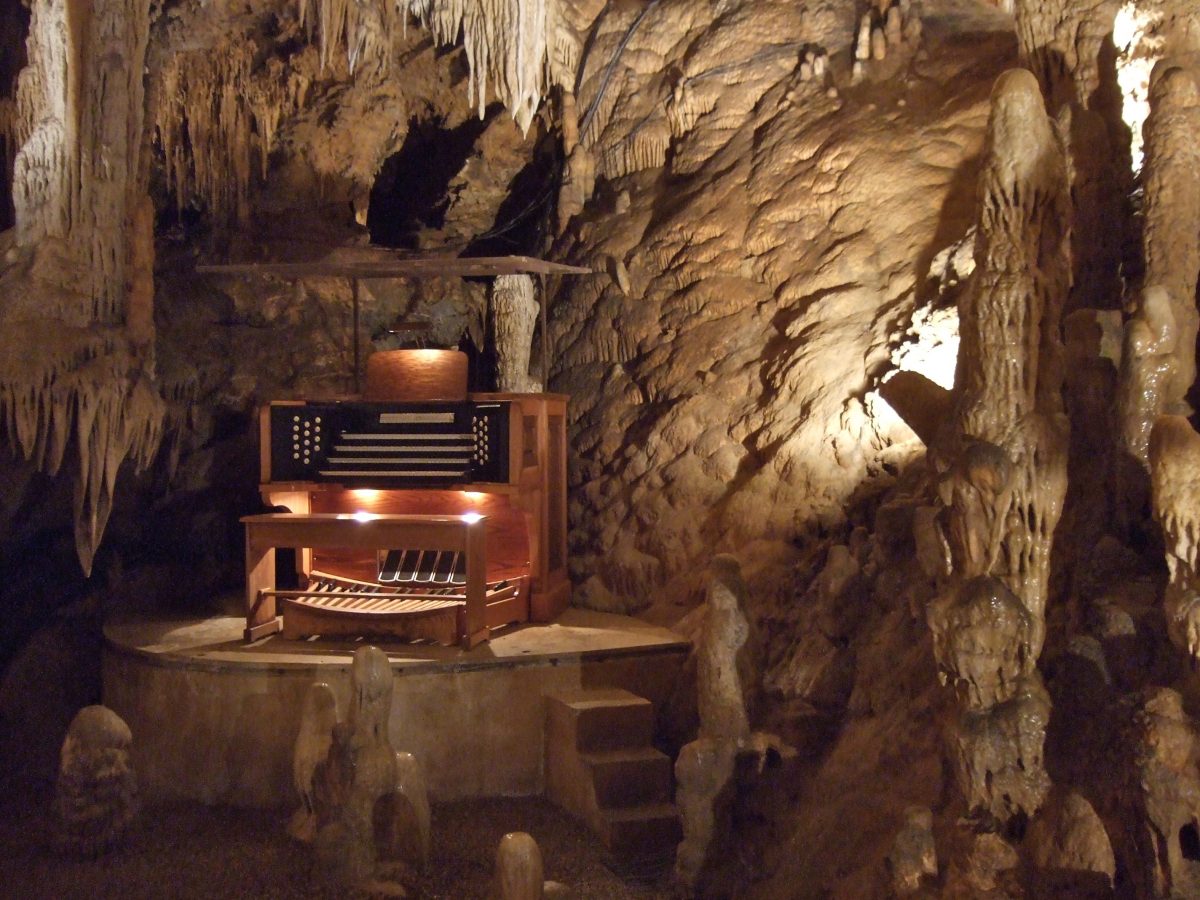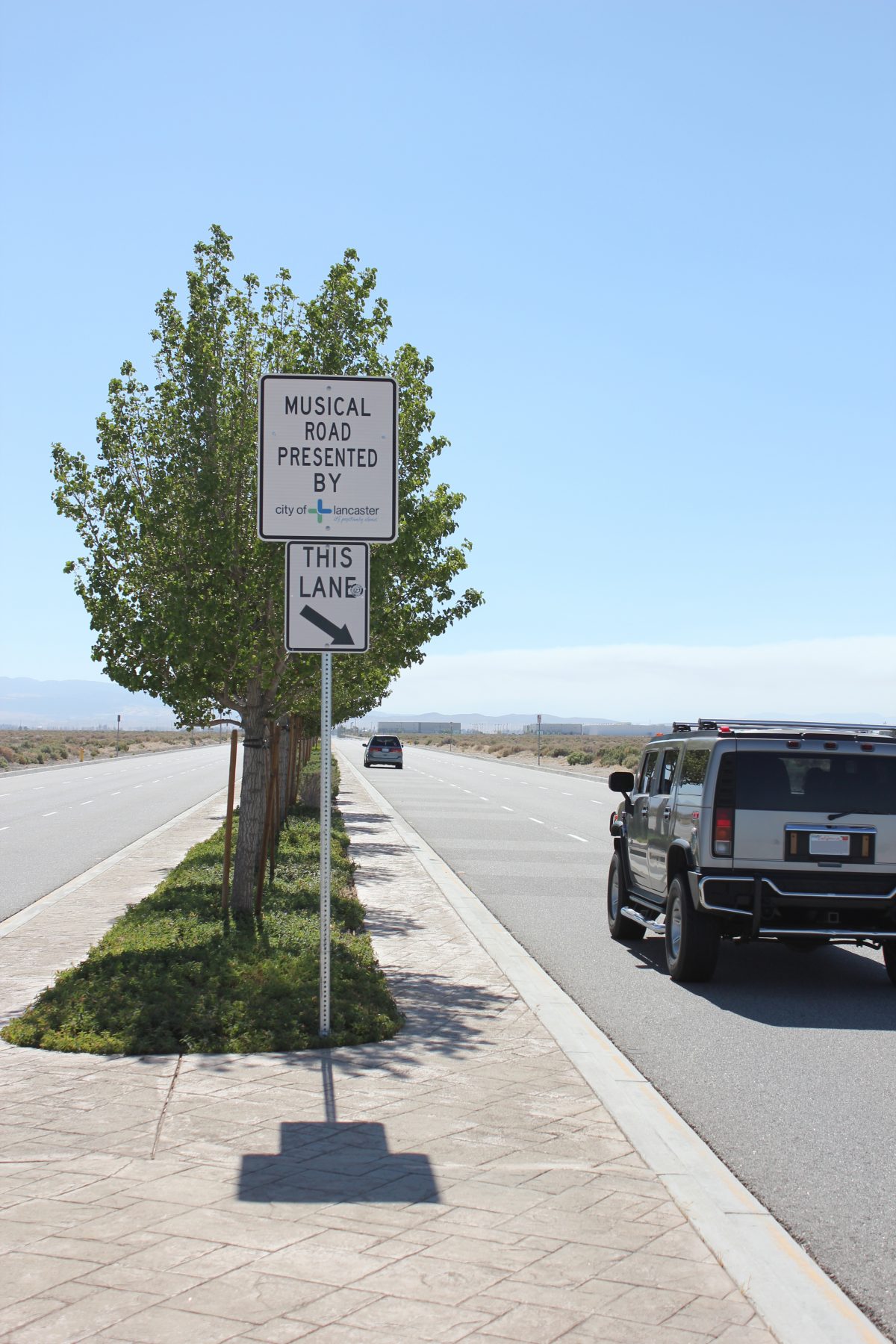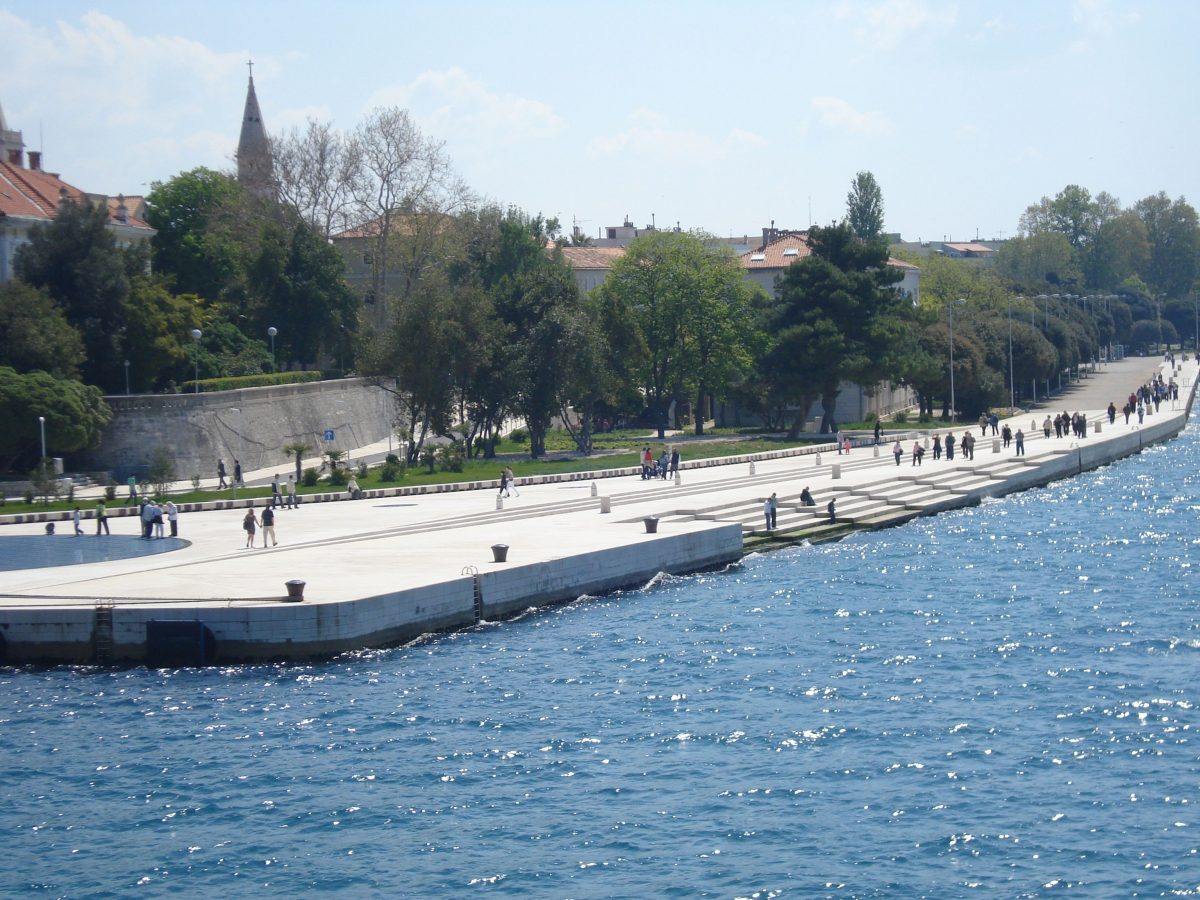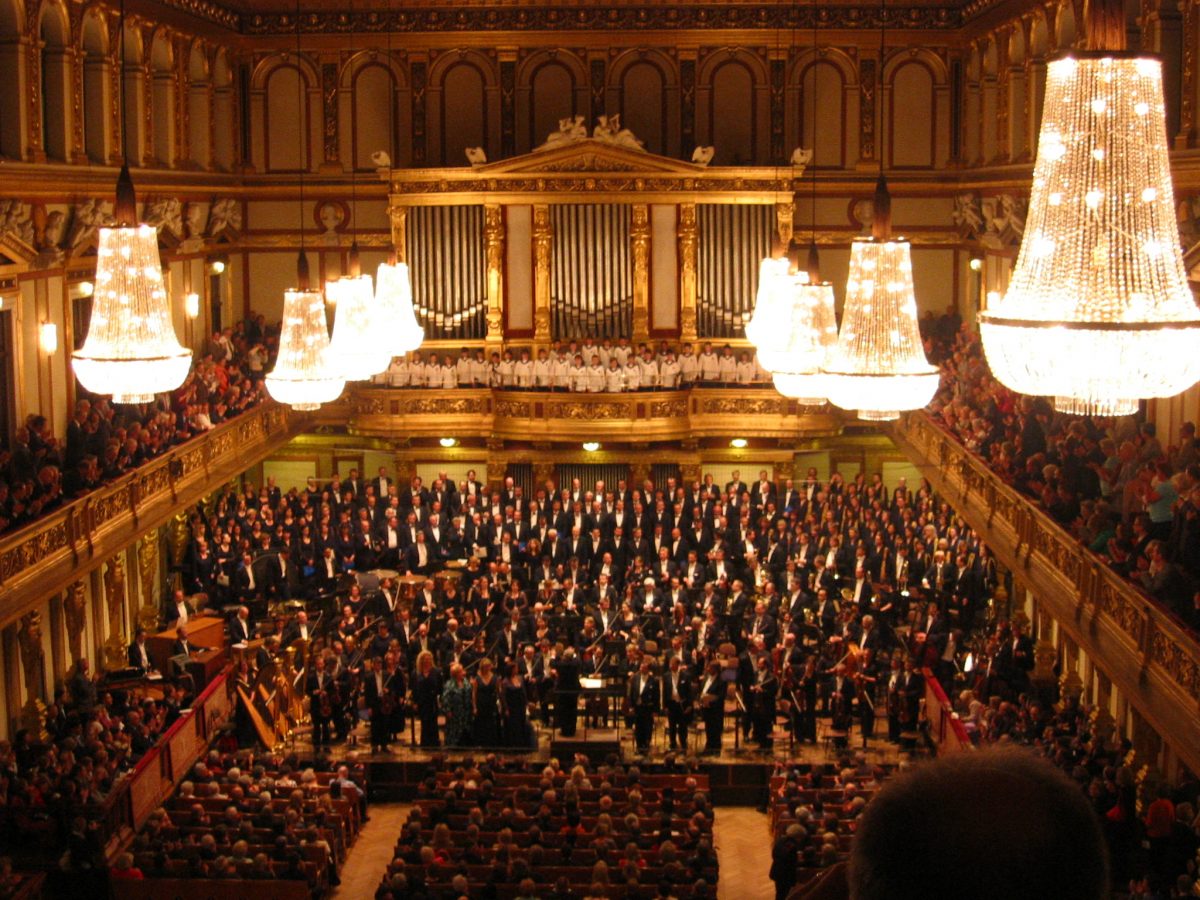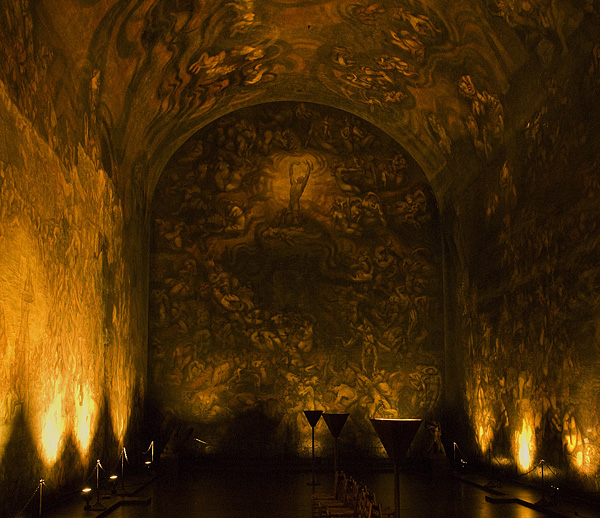
This doesn’t appear very high on lists of tourist attractions in Oslo, but it deserves to be much better known. It was built in 1926 by the artist Emanuel Vigeland as a gallery. Luckily, for sound tourists the windows were later filled in when it was turned into the artist’s mausoleum. Every surface in the room is now concrete or stone, and this means the sound bounces and rings around the room for an extraordinary long time. Norwegian acoustician and composer Tor Halmrast describes it as the most reverberant place for its size that he had ever experienced. When I sang a few notes, the notes hung in the air for 10-15 seconds. I can see why musicians like to perform there, because the reverb is very rich and seems to gradually cascade down from the ceiling.
Here is a simple balloon burst I recorded:
An acoustic analysis of the balloon burst and the acoustics can be found here.
The room is more dimly lit than the photo above shows, but after a while once your eyes have adapted to the dark you start to pick out the frescos covering the walls and ceiling that depict conception, life and death in very explicitly. One of the most famous mural is above the door just above the urn holding the artist’s ashes. A plume of babies rise above a pair of skeletons reclining in the missionary position.
Location and logistics
There are official tours of the site.


